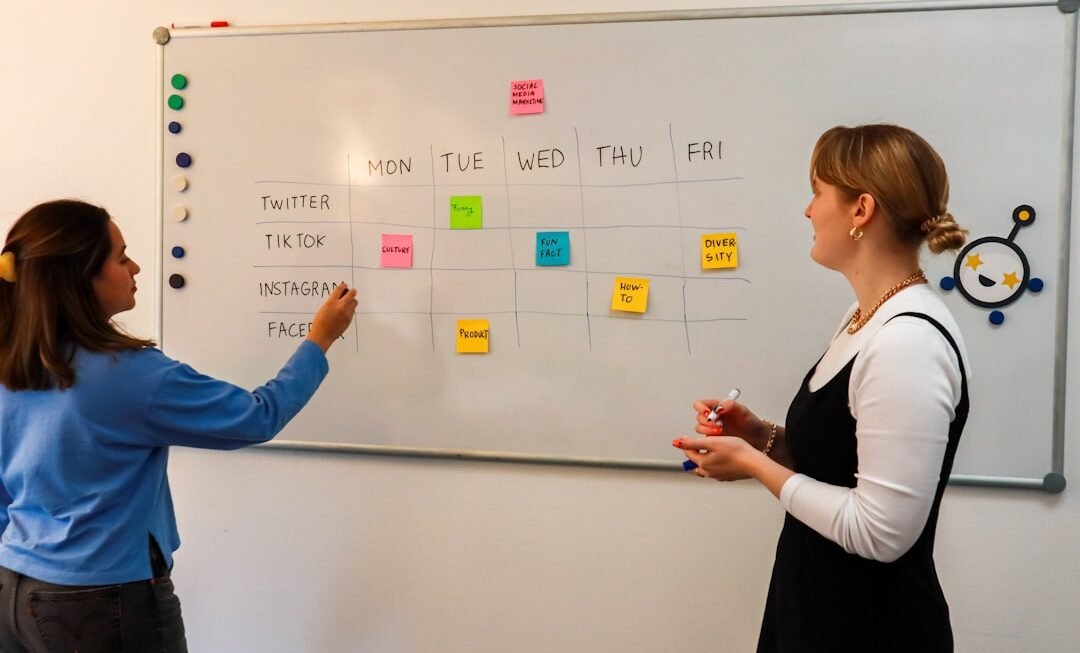In recent years, the landscape of education and training has undergone a significant transformation, largely driven by the rapid advancement of technology and the increasing demands of modern life. Microlearning has emerged as a prominent trend within this context, characterized by its focus on delivering content in small, easily digestible segments. This approach caters to the needs of learners who often find themselves pressed for time, juggling multiple responsibilities, and seeking efficient ways to acquire new skills or knowledge.
The rise of microlearning can be attributed to several factors, including the proliferation of mobile devices, the accessibility of online resources, and the growing recognition of the importance of lifelong learning in an ever-evolving job market. As organizations and educational institutions strive to adapt to the changing needs of learners, microlearning has gained traction as a viable solution. The shift towards remote work and online learning environments has further accelerated this trend, as individuals seek flexible and convenient ways to engage with educational content.
Microlearning not only aligns with the fast-paced nature of contemporary life but also leverages technology to create interactive and engaging learning experiences. This evolution reflects a broader cultural shift towards personalization and immediacy in education, where learners are empowered to take control of their learning journeys.
Key Takeaways
- Microlearning is gaining popularity in the digital age due to its ability to deliver bite-sized learning content.
- Microlearning involves delivering short, focused learning nuggets that are easy to consume and retain.
- Busy learners benefit from microlearning as it allows them to access learning content in small, manageable chunks.
- Microlearning has a positive impact on knowledge retention as it reinforces learning through spaced repetition.
- Implementing microlearning in corporate training requires the use of technology to deliver and track learning content effectively.
Understanding the Concept of Microlearning
Microlearning is defined as a method of delivering educational content in short, focused bursts that typically last anywhere from a few seconds to a few minutes. This approach is designed to address specific learning objectives and is often delivered through various formats, including videos, infographics, quizzes, and mobile applications. The essence of microlearning lies in its ability to break down complex topics into manageable pieces, allowing learners to absorb information more effectively without feeling overwhelmed.
The concept of microlearning is rooted in cognitive science principles that emphasize the importance of spaced repetition and active engagement in the learning process. By presenting information in bite-sized chunks, microlearning capitalizes on the brain’s natural ability to retain information when it is encountered repeatedly over time. This method not only enhances comprehension but also encourages learners to revisit content as needed, reinforcing their understanding and retention of key concepts.
As a result, microlearning has become an attractive option for both educators and corporate trainers seeking to enhance the effectiveness of their programs.
Benefits of Microlearning for Busy Learners
One of the most significant advantages of microlearning is its adaptability to the busy schedules of modern learners. In an age where attention spans are shorter than ever, microlearning provides a solution that allows individuals to engage with educational content at their own pace and convenience. This flexibility is particularly beneficial for professionals who may have limited time during their workday or for students balancing academic responsibilities with extracurricular activities.
Moreover, microlearning fosters a sense of autonomy among learners. By allowing them to choose when and how they engage with content, microlearning empowers individuals to take charge of their learning experiences. This self-directed approach not only enhances motivation but also encourages learners to seek out additional resources and opportunities for growth.
As a result, microlearning can lead to increased satisfaction and improved outcomes, as individuals feel more invested in their educational journeys.
How Microlearning Impacts Knowledge Retention
Research has shown that microlearning can significantly enhance knowledge retention compared to traditional learning methods. The brain’s capacity for retaining information is influenced by various factors, including the way content is presented and the frequency with which it is revisited. Microlearning leverages these principles by delivering information in short bursts that are easy to digest and remember.
One key aspect of microlearning’s effectiveness lies in its alignment with the concept of spaced learning. By distributing learning sessions over time rather than cramming information into longer sessions, learners are more likely to retain what they have learned. This approach capitalizes on the brain’s natural forgetting curve, which suggests that information is more likely to be retained when it is revisited at intervals.
Microlearning modules often incorporate quizzes or interactive elements that encourage learners to engage with the material actively, further reinforcing retention.
Implementing Microlearning in Corporate Training
The implementation of microlearning in corporate training programs has gained momentum as organizations recognize its potential to enhance employee development and performance. By integrating microlearning into their training strategies, companies can provide employees with targeted content that addresses specific skills or knowledge gaps. This approach not only streamlines the training process but also ensures that employees receive relevant information when they need it most.
To successfully implement microlearning in corporate training, organizations must first identify their training objectives and assess the needs of their workforce. This involves conducting a thorough analysis of existing training materials and determining which topics can be effectively broken down into microlearning modules. Additionally, organizations should consider leveraging technology platforms that facilitate the creation and distribution of microlearning content, such as Learning Management Systems (LMS) or mobile applications.
By fostering a culture of continuous learning and providing employees with easy access to microlearning resources, organizations can enhance engagement and drive performance improvements.
The Role of Technology in Facilitating Microlearning
Technology plays a pivotal role in enabling the effective delivery of microlearning content. The rise of mobile devices has transformed how learners access educational materials, allowing them to engage with content anytime and anywhere. This accessibility is crucial for busy professionals who may not have the luxury of dedicating long periods to formal training sessions.
Mobile applications designed specifically for microlearning can deliver notifications and reminders, prompting learners to engage with content during brief moments throughout their day. Furthermore, technology facilitates the creation of interactive and multimedia-rich microlearning experiences. Tools such as video editing software, graphic design applications, and e-learning authoring platforms empower educators and trainers to develop engaging content that captures learners’ attention.
Gamification elements, such as badges or leaderboards, can also be integrated into microlearning modules to enhance motivation and encourage friendly competition among learners. By harnessing technology effectively, organizations can create dynamic learning environments that resonate with today’s digital-savvy audience.
Designing Effective Microlearning Modules
Designing effective microlearning modules requires careful consideration of several key factors. First and foremost, clarity in learning objectives is essential; each module should have a specific goal that aligns with broader training outcomes. This focus ensures that learners understand what they are expected to achieve after engaging with the content.
Additionally, the format and delivery method should be tailored to suit the target audience’s preferences and learning styles. For instance, some learners may respond better to visual content such as infographics or videos, while others may prefer interactive quizzes or text-based materials. Incorporating a variety of formats within a single module can cater to diverse learning preferences and enhance overall engagement.
Another critical aspect of effective microlearning design is ensuring that content is concise yet comprehensive. Each module should present information clearly and succinctly while providing enough context for learners to grasp key concepts fully. Utilizing storytelling techniques or real-world examples can help contextualize information and make it more relatable for learners.
Overcoming Challenges in Microlearning Adoption
Despite its many advantages, the adoption of microlearning is not without challenges. One common obstacle organizations face is resistance from employees who may be accustomed to traditional training methods. Some individuals may perceive microlearning as less rigorous or comprehensive than longer training sessions, leading to skepticism about its effectiveness.
To address this challenge, organizations must communicate the benefits of microlearning clearly and provide evidence-based examples demonstrating its impact on knowledge retention and performance. Another challenge lies in ensuring consistency in content quality across different microlearning modules. As organizations create multiple modules on various topics, maintaining a high standard becomes crucial for credibility and effectiveness.
Establishing guidelines for content creation and conducting regular reviews can help ensure that all modules meet established quality benchmarks.
Case Studies of Successful Microlearning Implementation
Several organizations have successfully implemented microlearning strategies that have yielded positive results in employee engagement and performance enhancement. For instance, a leading technology company adopted microlearning modules focused on software updates and new features for its products. By delivering short video tutorials directly to employees’ mobile devices, the company saw a significant increase in product knowledge retention among its workforce.
Another example comes from a global retail chain that utilized microlearning for onboarding new employees. The organization developed bite-sized training modules covering essential topics such as customer service protocols and product knowledge. New hires could access these modules at their convenience during their first weeks on the job, leading to faster ramp-up times and improved customer interactions.
These case studies illustrate how organizations across various industries can leverage microlearning to address specific training needs while enhancing overall employee performance.
The Future of Microlearning in Education and Training
As we look ahead, the future of microlearning appears promising across both educational institutions and corporate training environments. The ongoing evolution of technology will continue to shape how microlearning is delivered and experienced by learners. Innovations such as artificial intelligence (AI) could enable personalized learning experiences tailored to individual preferences and progress levels.
Moreover, as remote work becomes increasingly prevalent, the demand for flexible learning solutions will likely grow. Microlearning’s adaptability makes it well-suited for hybrid learning environments where employees may split their time between remote work and in-person interactions. Educational institutions are also beginning to recognize the value of microlearning in enhancing student engagement and retention rates.
By integrating microlearning strategies into curricula, educators can provide students with opportunities for self-directed learning while accommodating diverse learning styles.
Tips for Creating Engaging Microlearning Content
Creating engaging microlearning content requires a thoughtful approach that prioritizes learner experience. One effective strategy is to incorporate storytelling elements into modules; narratives can make complex concepts more relatable and memorable for learners. Additionally, using visuals such as images or animations can enhance understanding while keeping learners engaged.
Interactivity is another crucial component; incorporating quizzes or interactive scenarios encourages active participation from learners rather than passive consumption of information. Providing immediate feedback on assessments can further reinforce learning by helping individuals identify areas for improvement. Finally, soliciting feedback from learners after they complete microlearning modules can provide valuable insights into what works well and what could be improved.
Continuous iteration based on learner input ensures that content remains relevant and effective over time. By focusing on these strategies, educators and trainers can create compelling microlearning experiences that resonate with today’s diverse audience while fostering a culture of continuous learning.












